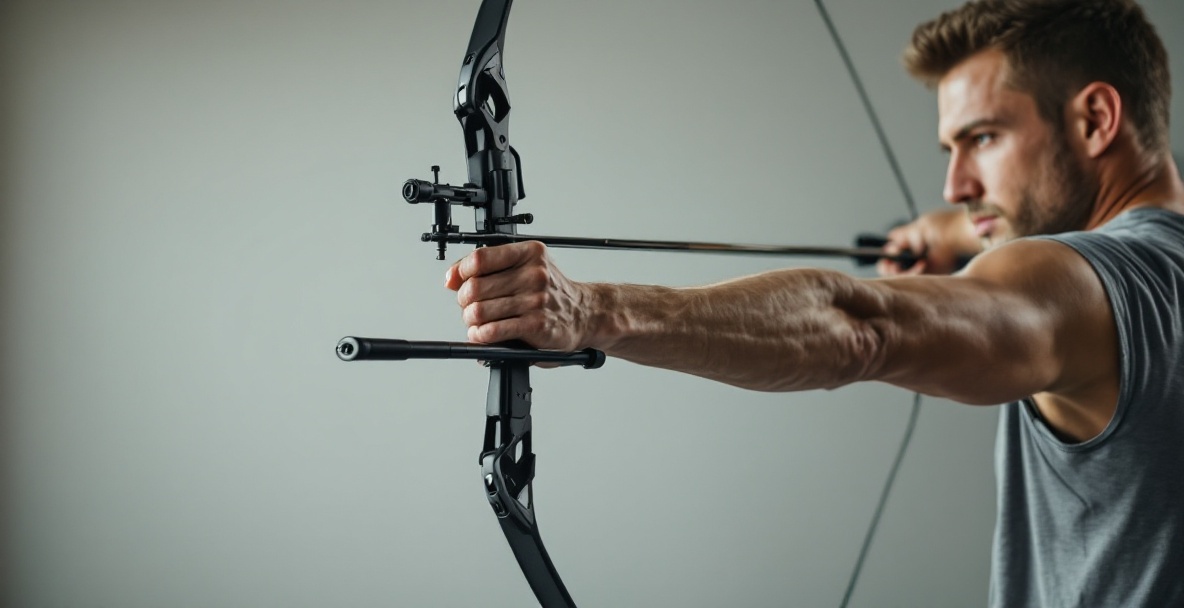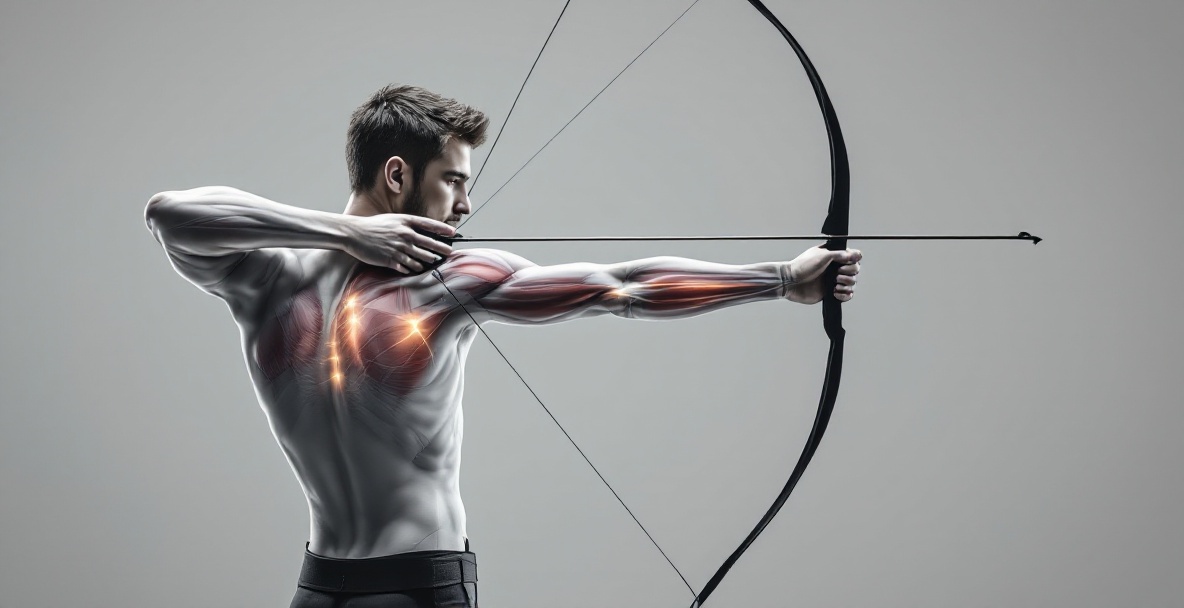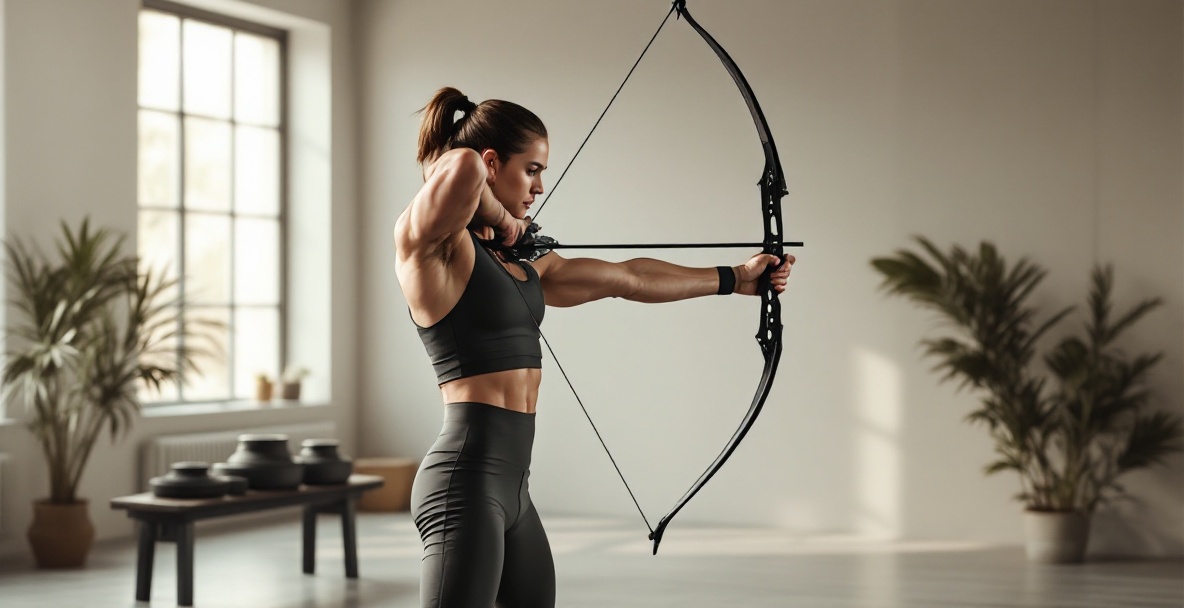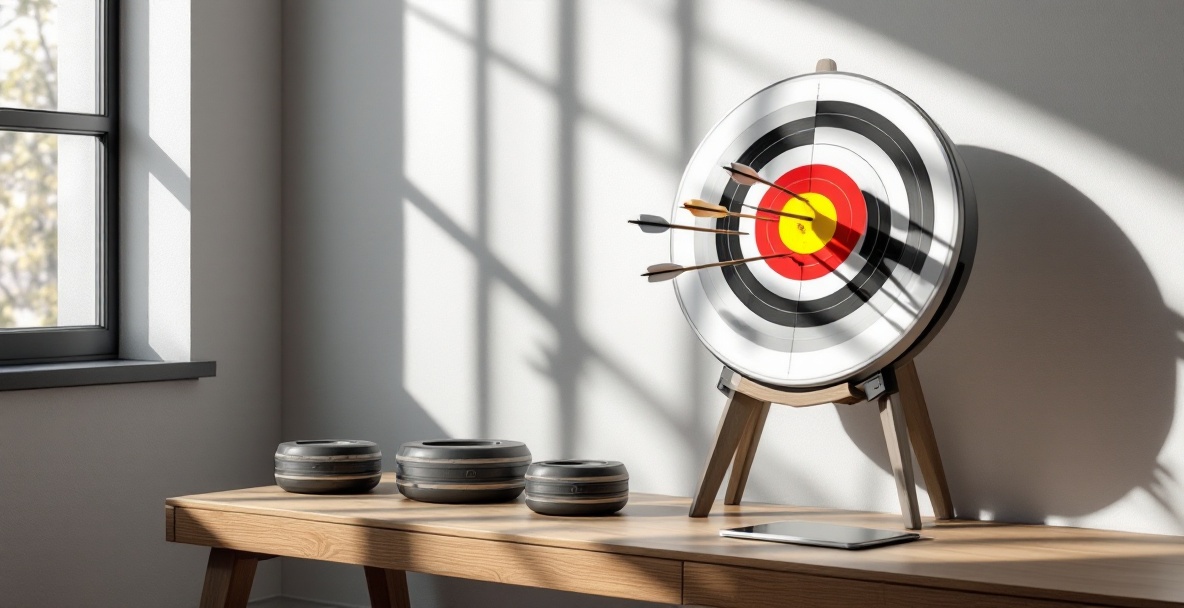Pulling back a bow is more than a simple motion; it takes real strength, balance, and endurance. When you work on targeted muscle strengthening, you can see a big change in your shooting game. At OneX Archery, we've helped archers power up their performance with the right workouts. This guide dives into exercises that focus on the muscles you use for a solid, steady draw and hold.
Discover How to Boost Your Draw Strength

Sometimes the secret to hitting the mark lies in the strength behind your pull. Many archers concentrate on shooting arrow after arrow, forgetting that building strong muscles is the foundation for a perfect shot. A smart workout can increase your draw weight capacity, keep you steady during long sessions, and improve your accuracy. Whether you compete or simply enjoy a weekend at the range, these exercises will help you work on the key muscle groups that turn a good shot into a great one.
Understanding the Muscles Behind Your Draw

It is important to know which muscles come into play when you pull your bow. Your body works as a team, and it is mostly your back that does the heavy lifting rather than just your arms. Many beginners miss that a smooth draw comes when you use the right muscles. Your back muscles like the rhomboids pull your shoulder blades together, while the trapezius keeps your shoulders steady. The big players, however, are your latissimus dorsi, also known as the "lats," which power every pull you make. Your shoulder muscles, or deltoids, work hard to keep everything in place when you draw and hold the bow. Small muscles such as the rotator cuffs and the muscles in your forearm play their part by stabilizing your shoulder and managing the string grip and release. A strong core ties it all together, giving you the balance to maintain perfect form shot after shot.
Muscle Groups You Should Work On
Focus on the muscles that really make a difference in your draw. The rhomboids are vital for creating that steady back tension, so instead of relying on your arms alone, try squeezing your shoulder blades together. Your latissimus dorsi muscles are the powerhouse behind drawing heavier bows and extending your shooting endurance. The trapezius works in tandem by keeping your shoulder in the right place throughout each draw. Don’t forget your rotator cuff muscles; these small stabilizers keep your shoulder joint aligned and protect you from injury. Finally, a strong core is essential because it transfers power smoothly and maintains stability as you go through each shot.
Warm Up Right: Get Your Body Ready for Action
Before you jump into your strength routine, spend some time warming up. A good warm-up not only helps you avoid injury but also boosts your training by getting the blood flowing. Start with 5 to 7 minutes of light cardio, such as jogging in place or doing jumping jacks, to get your heart pumping. Then, move on to some dynamic stretches. Try arm circles, gentle trunk twists, and shoulder rolls to prime the muscles you will use when drawing your bow. Finally, do 10 to 15 slow, controlled movements that mimic the action of drawing. This simple routine helps fire up your body and set the stage for a great workout.
Easy Stretching Tips for Archers
Stretching is your secret to staying flexible and keeping your form on point. Before shooting, do dynamic stretches that keep you moving, like arm swings, mild neck rotations, and torso twists. These moves activate your muscles without taking away the tension needed for a crisp shot. After you’re done, take time for static stretches that focus on your chest, shoulders, and back. A favorite is the chest stretch, where you lean against a doorframe and gently twist your body away. Spend about 30 seconds on each stretch, taking deep, calming breaths. Also, give extra attention to your drawing shoulder with the sleeper stretch. Lie on your side with your bottom arm at shoulder height and your elbow bent at 90 degrees, then use your top arm to slowly press your forearm down. This move is great for easing any tightness that builds up during long sessions.
Top Exercises to Build a Strong Draw

Now that you know which muscles to focus on and have warmed up properly, it’s time to dive into specific exercises that boost your draw power. We’ve chosen these workouts because they hit the muscle groups you use when drawing a bow and can be done with only a bit of equipment. The best exercises mimic your draw and let you slowly increase the resistance. Remember, good form matters more than heavy weights. Aim for 2 to 3 sets of 10 to 12 reps with about a minute of rest in between, and as you improve, increase the resistance gradually. Training these muscles 2 to 3 times a week, with rest between sessions, will pay off fast.
Resistance Band Pull Workouts
Resistance bands are a great tool to simulate the action of drawing a bow. To start, secure a resistance band around something sturdy at about shoulder height. Stand with your feet apart, keeping your core tight and your back straight. Grab the band with your drawing hand and pull it slowly from a stance that mimics your shoot. Focus on using your back muscles instead of just your arms, and really feel that squeeze in your shoulder blade toward your spine. Hold the fully drawn position for 3 to 5 seconds, then gently let the band return to its start. For a bit more challenge, try the archer's row: from your shooting stance, pull the band and then extend your other arm forward as if you are aiming at a target. This move builds strength and balance, and you can adjust the band’s resistance as you get stronger.
One-Arm Rows for Power
One-arm rows are perfect for working the muscles that power your draw. All you need is a dumbbell or kettlebell and a stable bench. Rest your opposite hand and knee on the bench while keeping your back flat. Hold the weight in your drawing hand with your arm extended, then pull it up using your back muscles. Keep your elbow close to your side and concentrate on squeezing your shoulder blade toward your spine at the top, just as you would in full draw. Pause for a few seconds, then slowly lower the weight back down. For an extra archery twist, hold the top position for 3 to 5 seconds to mimic the hold phase of your shot. Start light to perfect your form and gradually add more weight. Many archers at OneX Archery have seen big gains in their draw strength with this move.
Core Stability Workouts for a Solid Base
A strong core is the base of every solid shot. Plank variations work wonders for archers by building both endurance and stability. Begin with a basic forearm plank: position your forearms on the floor with your elbows right under your shoulders, extend your legs, and form a straight line from head to heels. Hold this position for 30 to 60 seconds, and keep those abdominal muscles tight. Once you nail the basic plank, try an archer’s twist by extending one arm forward as if holding a bow while keeping your body aligned. This extra challenge stops your torso from twisting and builds even more strength. For a tougher routine, try a 'draw and hold' plank: from your regular plank, lift one arm and pull your elbow back as if you are drawing, holding the pose for 5 to 10 seconds before relaxing. This exercise trains your core while also focusing on your drawing movement.
Tracking Your Progress: Spotting Strength Increases

To see if your hard work is paying off, it helps to keep track of your progress. A clear sign of improvement is being able to pull and hold a heavier draw while keeping your form. Along with that, note how many reps you can complete before fatigue sets in. Keeping a simple training log where you record your exercises, resistance levels, and rep counts can help you notice the gradual changes. Over time, you might see that you can shoot more arrows before your form begins to slip, which is a great indicator of progress. Also, trust your body-if your shoulders feel less tired or your form stays strong all through your session, you are definitely on the right track.
Helpful Apps and Tools
Smartphone apps and a few handy tools can make tracking your workouts easier. Apps like "Strong" or "Jefit" let you set up custom routines for archery and log your progress in one place. For a more precise measure, use a grip strength dynamometer to monitor your forearm power. You could also mark a resistance band to see how far you can pull it, which gives you a rough idea of your draw strength. Some archers even time how long they can hold a full draw with a stopwatch. As your muscles get stronger, you should see that hold time grow longer.
Level Up Your Archery Game
Building up your draw muscles does more than let you pull a heavier bow; it changes your entire shooting experience. With stronger and better-conditioned muscles, you will gain more stability and endurance, leading to tighter groups on the target and better scores overall. These workouts focus on the muscle groups that really boost your performance, giving you a solid base that practice alone cannot provide. Make these exercises a regular part of your routine, and slowly push yourself as you grow stronger. Remember, steady practice beats sporadic bursts of extreme effort-listen to your body, allow time for recovery, and celebrate every improvement you see at the range.
Ready to take your archery performance to the next level? Visit OneX Archery to discover our specially designed stabilizer weights. They work perfectly with your new strength routine, helping to balance your bow and reduce hand shock. When you pair these high-quality stainless steel weights with a solid routine for building draw-specific muscles, you'll achieve the kind of stability and control that leads to steady, accurate shots every time.
Leave a Reply